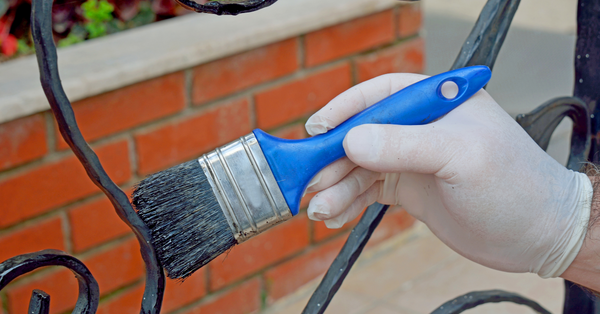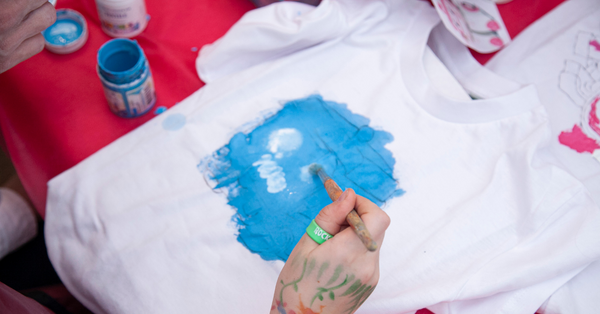
Artists are constantly attempting to push the envelope and experiment with unconventional surfaces. Glass is one of the many surfaces which oil painters could be tempted to tackle.
Since oil paints are, as the name implies, oil-based, they are often much slicker which presents a dilemma because glass surfaces are also very smooth and slick. However, this doesn’t mean you can’t use them for your next glass painting project.
Oil paints can be used to effectively embellish glass surfaces with a few extra precautions and careful application. Follow the step-by-step guide below and learn about using oil paint on glass.
TABLE OF CONTENTS
Step-by-Step Guide to Paint Glass with Oils
STEP #1 Clean Your Glass
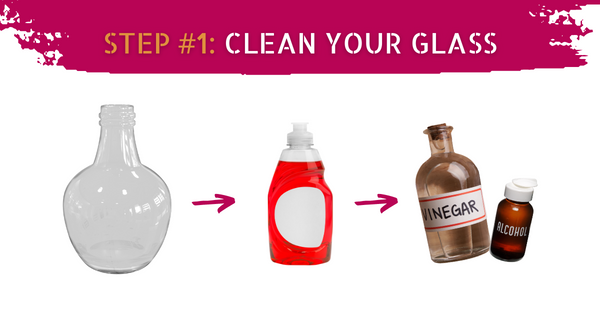
Before you even begin, be sure to wash the glass with warm, soapy water to remove any dust, dirt, or grease.
Next, rinse the glass with warm water and let it dry completely.
Then, dampen a paper towel with rubbing alcohol or white vinegar and wipe the glass to make sure there is no soap residue.
Let it air-dry for about 15 minutes.
STEP #2 Prepare Your Glass for Painting
There are really only two tried and true methods to prep your glass before painting with oils: sandpaper or primer.
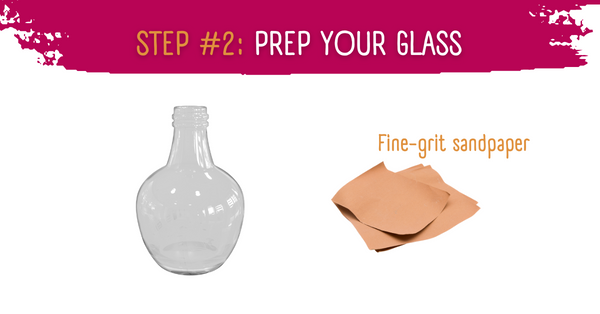
By sanding with very fine grit sandpaper, you can create enough texture for the oil paint to rest while still retaining a significant amount of the surface’s translucency by sanding with very fine grit paper. Simply use firm pressure in a circular motion to sand the glass on a level surface.
To avoid any negative side effects, make sure you’re using a respirator mask and safety eyewear at all times. Additionally, it would be ideal if you could do this outside where there won’t be any little glass fragments left on any surfaces.
Primer is another method to prep your glass for oil painting. One of the most important tools in any artist’s toolbox is gesso, and it makes a great primer.
Gesso is frequently used as the canvas’ primer and is an acrylic-based product that adheres to almost any surface. But here’s how it works. The majority of gesso is white dyed, which is acceptable for oil painting on canvas that will be entirely covered, but it completely contradicts the purpose if used on glass.
Fortunately, there is a fix for this exact problem—gesso in clear. Yep, you read that correctly. This colorless solution, which mimics all the beneficial properties of a typical gesso, is ideal for use on glass. A thin application or two of this primer will enable your paint to adhere to the surface and produce the precise effects you desire.
STEP #3 Paint Your Glass Carefully

Painting with oil-based paints on glass should follow the “fat over lean” principle. Essentially, each successive layer of paint should be fatter or more oily than the one underneath it. This helps stop cracking and peeling, which can happen when painting on glass with oil-based paint.
So when painting with oil colors on glass, thinner layers should go first, then gradually build up to thicker layers as you go.
STEP #4 Seal the painting
The best way to seal your new piece without losing its glass-qualities is to use a clear spray varnish.
If your spray varnish has a label, check it to see if there are any instructions. Next, make sure you’re either outside or in a space with good ventilation. This is due to the potent odor that spray on sealant can emit.
Holding the spray at a minimum of 12 inches away from the painting, slowly and steadily apply the sealant. Sweep your hand over the design in a back-and-forth manner. To get an even seal, avoid keeping the spray in one place for an extended period of time.
After applying the initial layer, give it about 15 minutes to dry. The process can then be repeated 3-5 more times before the glass is allowed to air dry for 24 hours.
Precautions to keep in mind
Regardless of what surface you’re painting, you should always keep a few things in mind when working with this potentially harmful substance.
Oil-based paints contain volatile organic compounds (VOCs) that can be released into the air and cause respiratory irritation. Therefore, you should always wear protective clothing, including long sleeves and pants, safety goggles, and a respirator or face mask.

The VOCs from oil-based paints can be hazardous to your health if you breathe them in for a long period of time. Because of this, it’s best to work in a well-ventilated area and use a fan to help circulate fresh air.
Finally, you should always dispose of any excess paint as safely as possible to avoid harming others or the environment. Check with your local hazardous waste center to find out what you can do with leftover paint.
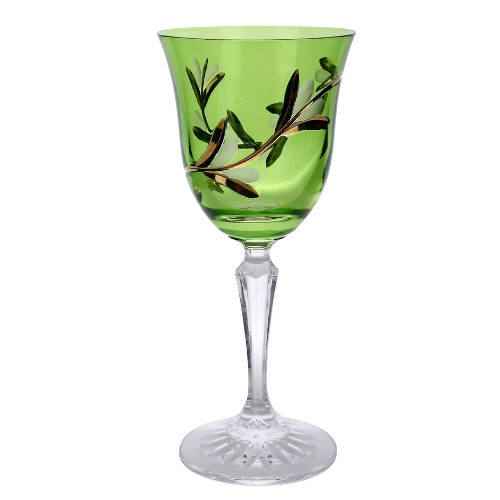
Tips and Tricks for Using Oil Paints on Glass
Below are a few helpful tips to consider when painting glass with oil-based paints.
After cleaning with warm, soapy water, put on gloves before cleaning with rubbing alcohol to prevent the oils from your fingers getting on the glass
Prime the glass surface with a layer of glass primer
Use fine tip brushes for a more detailed effect
Don’t wet your brushes and always use a paper towel to remove any potential liquids from your paintbrush
Use high quality brushes that have minimal shedding
Use a high-quality oil paint that is specifically designed for use on glass
Use thin layers of paint for a more transparent look.
Avoid using too much paint or it will be difficult to remove.
Allow each layer of paint to dry before adding another
Avoid using too much paint or it will be difficult to remove.
Use a fine-grit sandpaper to smooth out any rough edges
Use a fine-grit sandpaper to smooth out any rough edges
Apply a sealant, such as a varnish or lacquer, to protect the paint.
Allow the painting to dry completely before displaying it.
Frequently Asked Questions
What kind of paint will stick to glass?
An acrylic or oil-based paint that is made for use on glass is typically the type of paint that will adhere best to glass. Because it comes in a wide range of colors and is simple to use, acrylic paint is a popular option.
There are many art paints available in stores that are made specifically for adhering to glass, including enamel, chalkboard, and glass paints. Prior to beginning the painting, make sure the glass has been completely cleaned.
How do you use oil color on glass?
Even though oil-based paints are not very common, you can use them on glass objects. Colors can also be transparent or opaque. Colors won’t wash off on hand washing if you put this kind of paint on your glass. Since water doesn’t dissolve oil-based paints, instead of washing your painted goods with water and soap, you should use a soft brush and solvent-based cleaning tools.
Can you use oil paint on windows?
Painting the glass windows of your home is a wonderful way to add a touch of luxury. It’s a rather simple project, and you may choose whichever color you like. Oil-based enamel and oil-based enamel with vinyl paints are the best for painting your windows. Because it provides excellent coverage with little work on the part of the painter, this variety is preferred by homeowners. But before exposing the surface of your window (or doors) to water, you’ll need to apply more than one coat and wait for it to dry.
Using oil-based enamel paint with vinyl can be a smart option if you’re trying to maintain your privacy but are unsure of how effectively the painted glass windows will serve you. It has all of the same characteristics as conventional oil-based enamel paint, but because it also contains vinyl, it adheres to surfaces more successfully.

